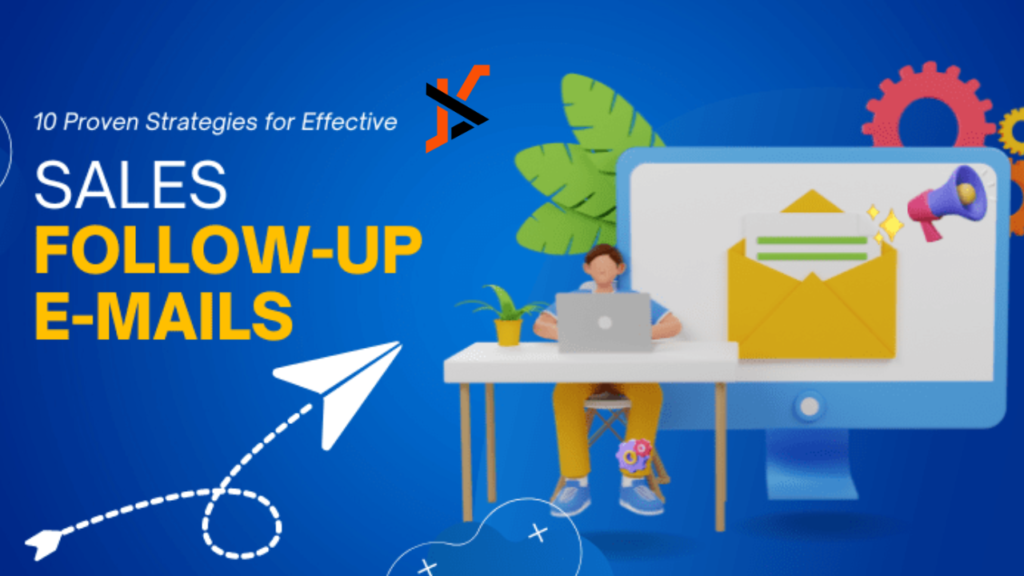In today’s fast-paced business environment, mastering the art of follow-up emails is crucial for closing deals and maintaining strong relationships with prospects. An effective follow-up email strategy can mean the difference between a closed deal and a lost opportunity. This article will explore proven strategies to enhance your follow-up emails and help you close more deals.
1. Understand the Importance of Timing
Timing is everything when it comes to follow-up emails. Sending your email too soon can come across as pushy, while waiting too long might make your prospect lose interest. Research suggests that the best time to send a follow-up email is between 24 to 48 hours after the initial contact. This window shows persistence without appearing desperate. However, consider the context of your initial interaction to determine the optimal timing.
2. Personalize Your Message
Personalization goes beyond just addressing the recipient by their first name. It involves tailoring your message to the recipient’s specific needs and interests. Use information gathered from previous interactions to demonstrate that you understand their pain points and how your product or service can provide a solution. Personalized emails have higher open and response rates, making them more effective in closing deals.
3. Craft Compelling Subject Lines
The subject line is the first thing your recipient sees, and it can significantly impact whether your email gets opened. A compelling subject line should be clear, concise, and relevant. Avoid generic phrases and instead, use specific language that piques curiosity or highlights a benefit. For example, “Follow-Up on Our Discussion About Improving Your Sales Pipeline” is more engaging than “Just Checking In.”
4. Provide Value in Every Email
Each follow-up email should provide value to the recipient. This could be in the form of new information, helpful resources, or actionable insights. Instead of merely asking if they’ve had a chance to review your proposal, offer something that can help them make a decision. For instance, share a case study or a whitepaper that demonstrates the benefits of your solution. Adding value builds trust and positions you as a knowledgeable partner.
5. Keep It Short and Focused
Busy professionals do not have the time to read long emails. Keep your follow-up emails short and to the point. Focus on the main message and include a clear call to action (CTA). A well-crafted follow-up email should ideally be no longer than a few short paragraphs. This increases the likelihood that your recipient will read the entire message and respond.
6. Use a Professional Tone
While it’s important to be personable, maintain a professional tone in your follow-up emails. This demonstrates respect and helps build credibility. Avoid using slang or overly casual language. Instead, be polite, courteous, and concise. Remember, your follow-up email is a reflection of your professionalism and can influence the recipient’s perception of your brand. Personal touch in your email can avoid people to think you are using generated AI for your business.
7. Include a Clear Call to Action
A follow-up email without a clear call to action is unlikely to achieve its goal. Whether you want the recipient to schedule a meeting, provide feedback, or make a decision, clearly state what you expect them to do next. Use actionable language and make it easy for them to comply. For example, “Please let me know if you are available for a 30-minute call next week to discuss this further.”
8. Leverage Follow-Up Sequences
Sometimes, one follow-up email is not enough. Implementing a follow-up sequence can increase your chances of getting a response. A sequence is a series of strategically spaced follow-up emails, each building on the previous one. Plan your sequence carefully, ensuring each email adds new value and reiterates your CTA. Tools like CRM systems can automate follow-up sequences, ensuring timely and consistent communication.
9. Track and Analyze Your Emails
Tracking and analyzing the performance of your follow-up emails can provide valuable insights. Use email tracking tools to monitor open rates, click-through rates, and response rates. This data can help you understand what works and what doesn’t, allowing you to refine your strategy. Experiment with different subject lines, email content, and timing to see what resonates best with your audience.
10. Be Persistent, but Know When to Stop
Persistence is key in sales, but there’s a fine line between being persistent and being annoying. If you’ve sent several follow-up emails without a response, it might be time to pause. Respect your prospect’s time and space. You can always revisit them in the future or find alternative ways to re-engage. Knowing when to stop shows professionalism and respects the prospect’s decision.
Conclusion
Effective follow-up emails are a vital part of the sales process. By understanding the importance of timing, personalizing your messages, crafting compelling subject lines, and providing value, you can significantly improve your follow-up strategy and close more deals. Keep your emails short, professional, and focused, with a clear call to action. Leverage follow-up sequences and use data to refine your approach. Remember to be persistent, yet respectful of your prospect’s time.
For more insights and tools to enhance your email communication strategy, visit www.imailcomms.com. Implementing these strategies will help you stay top-of-mind with your prospects and increase your chances of closing deals effectively.

